Giosuè Carducci
Giosuè Carducci was born on July 27 in 1835 in Pietrasanta and died on February 16 in 1907 in Bologna.
His life was heavily influenced by his father, Michele Carducci, who studied medicine in Pisa. He was passionate about politics, had a bad temper and had revolutionary-oriented ideas.
The name Giosuè was chosen by the father, to honour an old friend, while the mother Idegonda chose the second name, Alessandro, after her father, who was very ill at the time.
The father’s strong character caused a lot of problems in the family, to the point that they had to move to Bolgheri in 1838, where the father had an administrative role under the Della Gherardesca family.
Giosuè began to show from a young age his most distinctive features, being a rebel, wild, and outdoorsy boy.
« Io con una bambina dell’età mia… a un tratto ci si scoperse una bodda (toad ndr). Grandi ammirazioni ed esclamazioni di noi due creature nuove su quell’antica creatura… un grave signore si fece sull’uscio a sgridarmi… Io, brandendo la fune, come fosse un flagello, me gli feci incontro gridandogli: Via, via, brutto te! D’allora in poi ho risposto sempre così ad ogni autorità che sia venuta ad ammonirmi, con un libro in mano e un sottinteso in corpo, a nome della morale.»
In Bolgheri, Giosuè repeatedly suffered from fevers that tormented him for two years. The father took care of him by giving him quinine (a natural alkaloid extracted by cinchona).
«Il chinino ingoiato gli lasciò straordinarie visioni. Originò da quella violenta cura l’impressionabilità della sua fantasia sensibilissima e quella irrequietezza che pareva a volte spasimo della sua psiche»
The Carducci’s household, despite being poor, had its own library, where the classic-romantic taste of the father and his revolutionary inclinations clearly emerged. Here Giosuè had the chance to discover the Iliad, the Odyssey, the Aeneid, Jerusalem Delivered, the Roman History by Charles Rollin and the History of the French Revolution by Adolphe Thiers.
During the ten years in Bolgheri the family lived in poverty and they could not afford to send Giosuè to school. The father therefore instructed the priest Giovanni Bertinelli to teach Giosuè latin during the day, while the father took over the lessons during the evenings. Giosuè deeply loved latin from the very beginning.
Thus Giosuè wrote “Satira a una donna” (1845) and the passionate “Canto all’Italia” (1847), both in tercets. In 1848 he wrote the sonet “A Dio” and the tale in octaves “La presa del castello di Bolgheri”. It was rumoured that he knew by heart the first four books of the Metamorphoses, but also Manzoni’s work and Pellico’s.
The revolutionary ideas of the father eventually awakened again and with them came troubles. He was called mean names and was forced to leave Bolgheri after being threatened by some anonymous shootings. He then reappeared in Castagneto.
It was June 2 1848, and Giosuè had spent almost ten years in Bolgheri, during the crucial transition from childhood to adolescence. What was meant to be a temporary stopover in Castagneto turned into an eleven-month long stay.
They were months of tension and ardour for the father, whose political views intertwined with the “quarantotto castagneto”, which was a revolution within the revolution.
Michele’s ideas were initially praised by the distinguished local people, but then, when it became clear that his noble ideas wouldn’t bring any money to Castagneto’s families, his integrity became a serious obstacle.
The family was forced to move to Lajatico, where they had the same troubles after not very long. These events finally persuaded the Michele to look for shelter in big cities.
Davanti San Guido
The famous “Davanti San Guido” is an ode written by Giosuè Carducci in the last decades of 1800. The official dating is December 1874, but reliable sources tell us the poem was actually completed in the summer of 1886.
It was the recent stay in Castagneto, where he had spent his childhood, to give him the necessary inspiration to complete the poem, which was then published in the collection Rime nuove (1887).
The poem originated during a journey that Carducci took by train to go back to Bologna. During the journey, as he was crossing Maremma Toscana, the poet saw again his childhood places, with the tall cypresses that go from Bolgheri to Saint Guido’s chapel.
The childhood memories, awakened first by the cypresses and, lastly, by the almost romantic vision of his grandmother Lucia (the poet’s paternal grandmother that he was particularly attached to and that is buried in Bolgheri’s small cemetary) were in contrast with the journey to Bologna, where his beloved daughter Tittì was waiting for him.
On one side, the temptation to go back in time, in that nature that saw him growing up, and on the other the impossibility of turning back time, with the train that carries on with its journey.
After his death
When the poet died on February 16 in 1907, the Council not only changed the name of the town from Castagneto Marittimo to Castagneto Carducci, but also pondered the hypothesis of acquiring one or both of Carducci’s houses in Bolgheri and Castagneto, similarly to what had already happened in Bologna, when Carducci was still alive.
However, the house in Bolgheri was not considered at the end, given the little appreciation that the Gherardescas had for Carducci. On the other hand, everyone hoped that the purchase of the house in Castagneto would be possible. However, the very young age of the owner Antonietta Espinassi Moratti proved to be quite an obstacle.
Once the owner reached the legal age to negotiate, the First World War had already started, and unfortunately it was no longer possible to dream.
However the dream can come true today, thanks to Antonietta’s daughter, Maria Bianca Cancellieri. She, together with the Council, has taken care of renovating the apartment. In June 1992, almost one century and a half after his first stay, Carducci became again a citizen of that town in his Maremma that was so influential in his education and in his poetic work.
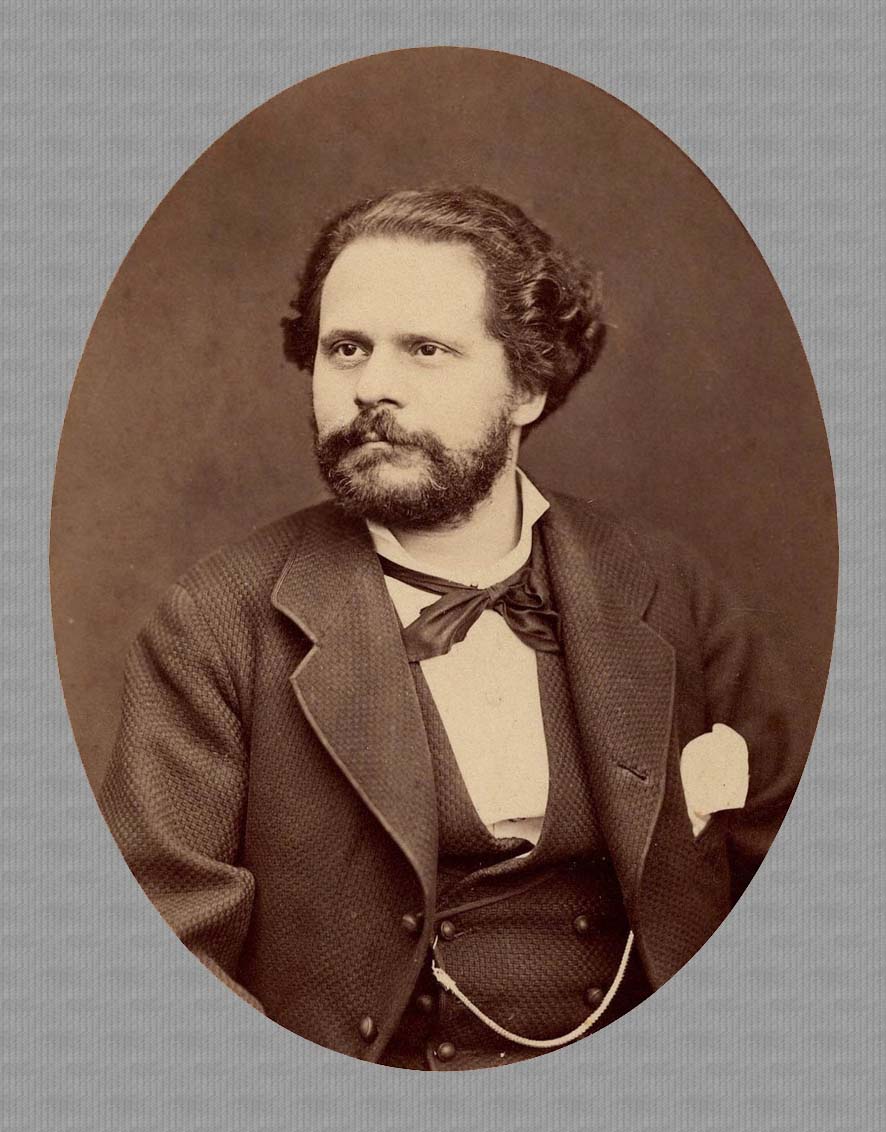
Poet Giosuè Carducci as a young man, in a vintage photo
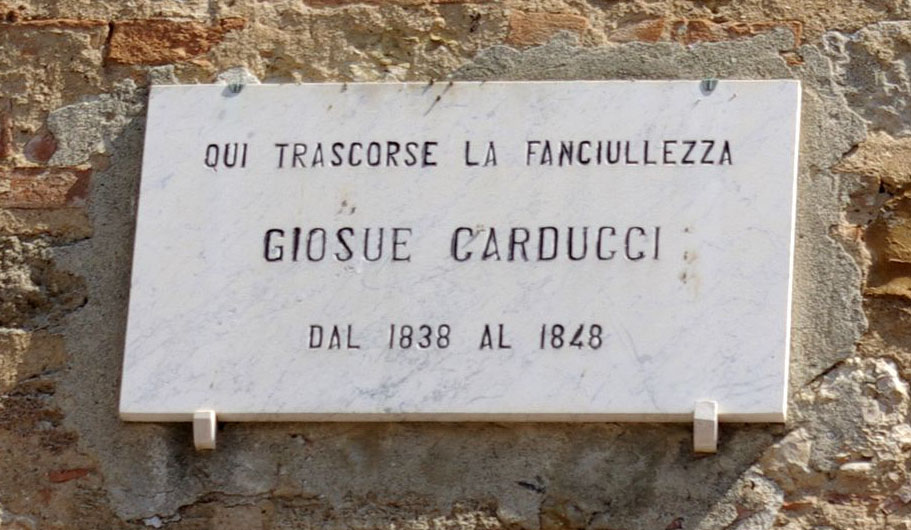
Label in Bolgheri that remembers the ten-year-old poet’s stay
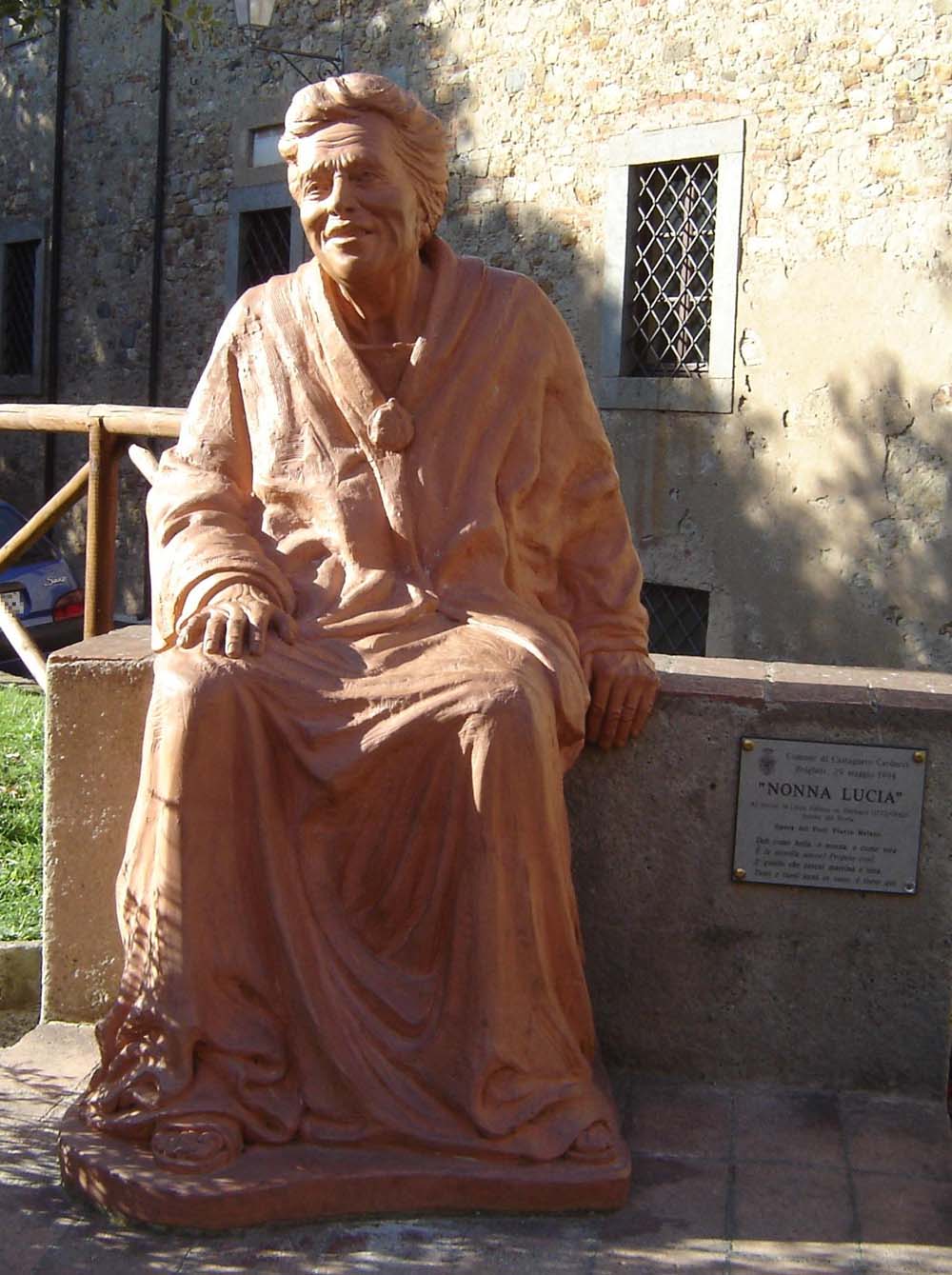
Statue of Nonna Lucia, to which Giosuè devotes a part of poetry Davanti San Guido
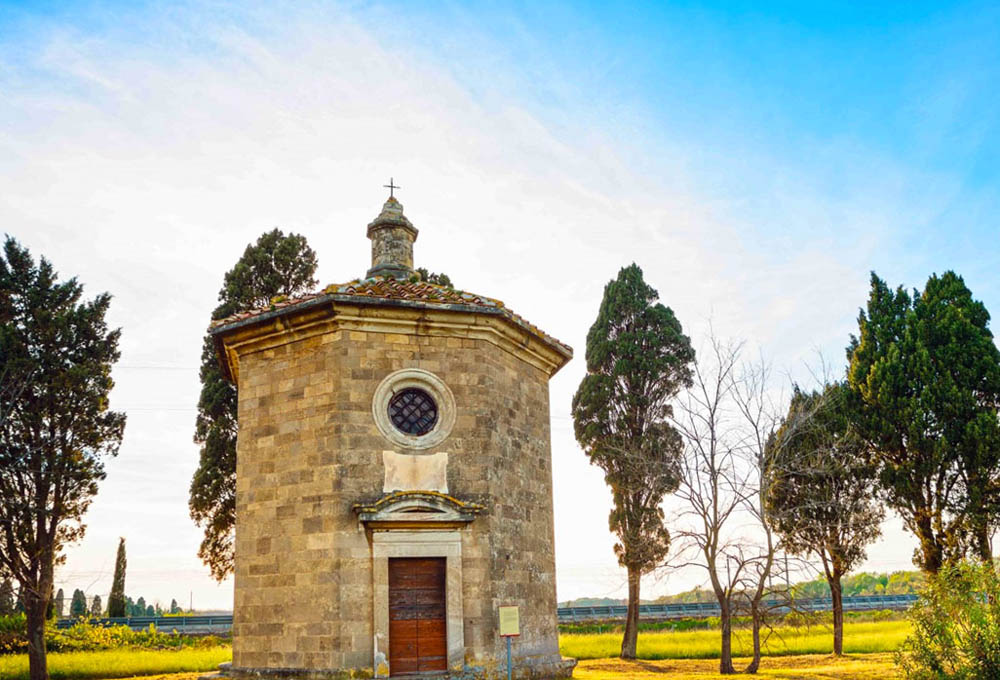
The famous Oratorio di San Guido, at the beginning of the Bolgheri cypress boulevard
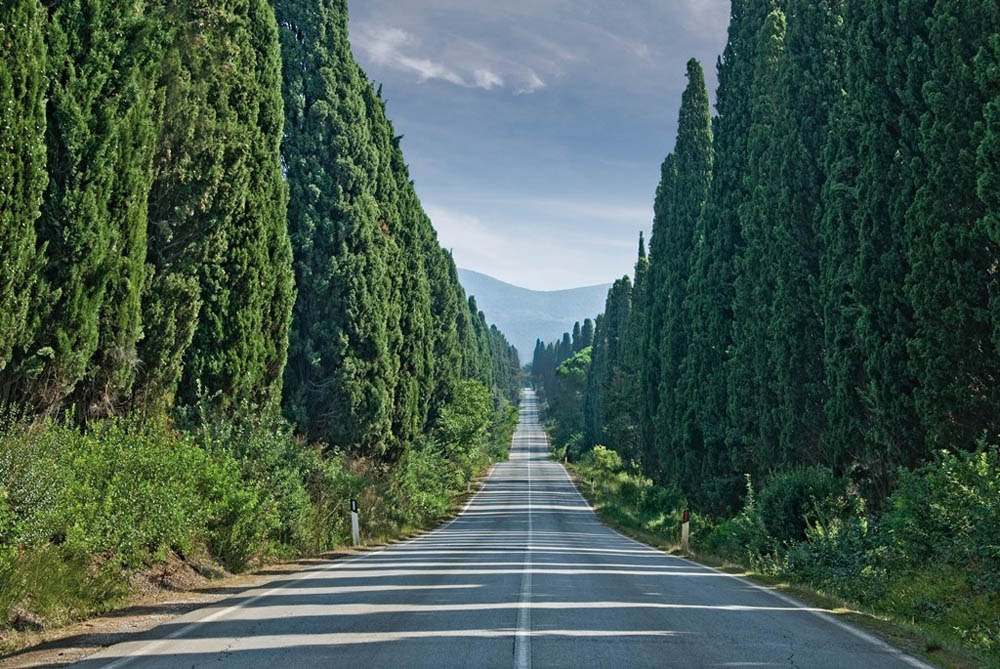
The evocative cypresses avenue that leads from San Guido to Bolgheri, which inspired the Poet
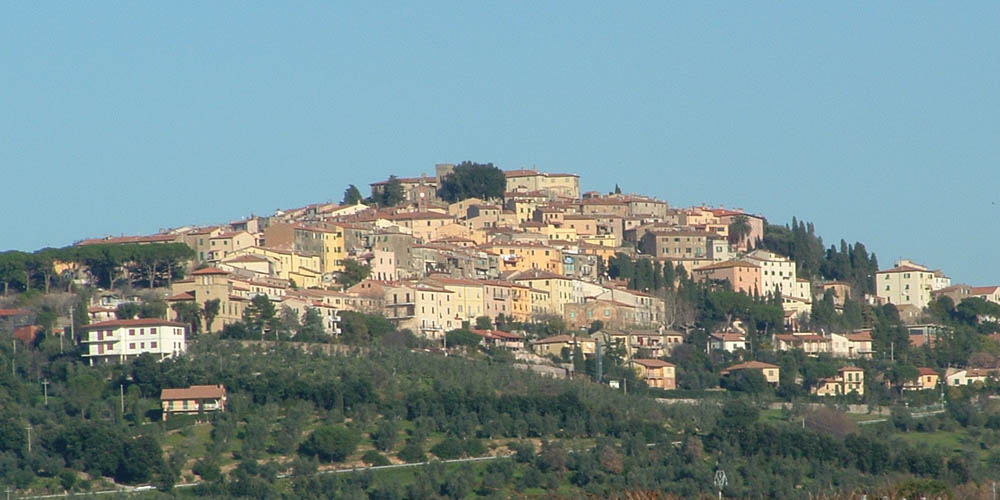
View of Castagneto village, where the poet lived for 11 months before leaving these places definitively



